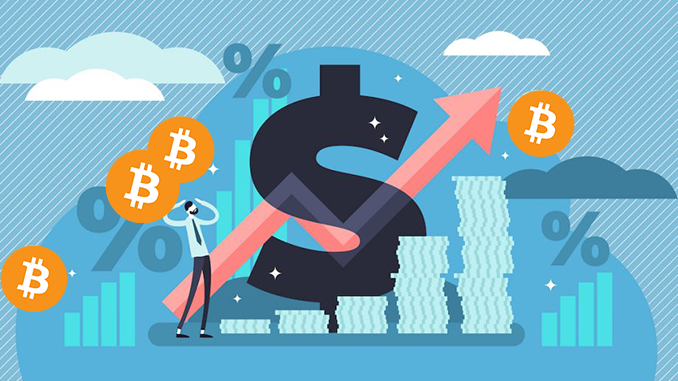
Bitcoin (BTC) has not been able to develop a sustainable positive trend in its price curve for about two months now. Observers are puzzled, as Bitcoin should be scoring points with the current rising inflation.
With prices temporarily even below $32,000, Bitcoin (BTC) has lost more than 5 percent in a weekly comparison and more than 15 percent over the month. The all-time high of mid-April with over 64,000 US dollars per Bitcoin looks far away. In the winter of 2020/21 and subsequent spring, it seemed as if more and more investors understood the deflationary nature of BTC. But right now, with data from the U.S. already showing 5.4 percent inflation in consumer prices, for example, Bitcoin is weakening in its role as a store of value like gold.
With a Bitcoin cap capped at 21 million and regular Bitcoin halvings, BTC has inflation-prevention tools built into the concept. Institutional investors like MicroStrategy cited this very feature as an argument for shifting cash reserves into Bitcoin. After all, by 2020 it was clear that as a result of the Corona pandemic, central banks around the world were implementing monetary policies that would sooner or later fuel inflation.
Thus, Bitcoin proponents are not necessarily surprised by the persistent sideways movements of the Bitcoin price curve. Its characteristic as a store of value had already been priced in. The sometimes irrational peak prices for Bitcoin are now being corrected. And one should not forget: Currently, citizens would use regained freedoms in everyday life for consumption. With regard to the charts for BTC, this could also be translated into the old stock market motto “buy the rumors, sell the news”. Translated, then, smart investors would have stocked up on Bitcoin when inflation was forecast – and when it showed up in the statistics starting in the spring, sold their BTC with sometimes huge profits.
The Bitcoin price – influenced by inflation?
We have repeatedly summarized different forecasts on the Bitcoin price, most recently for example here. Inflation due to lax monetary policy in the US, EU and elsewhere often plays a supporting role. Of course, Bitcoin’s current price curve is disappointing for those who bought BTC when the market was booming. On the other hand, Bitcoin is still up well over 200 percent year-over-year as of July 2020 and can easily absorb inflation. When it comes to charts, it’s all in the perspective, BTC thus teaches.
There seems to be agreement among the Western central banks not to stifle inflation. Because then – so the fear – the successes achieved when the economic consequences of Corona were minimized with a lot of money, such as the unemployment rate, would be undone. It is therefore quite possible that Bitcoin’s plus points as an inflation hedge will be reflected in its price in the coming months and years.
Best place to buy Bitcoin:

Leave a Reply